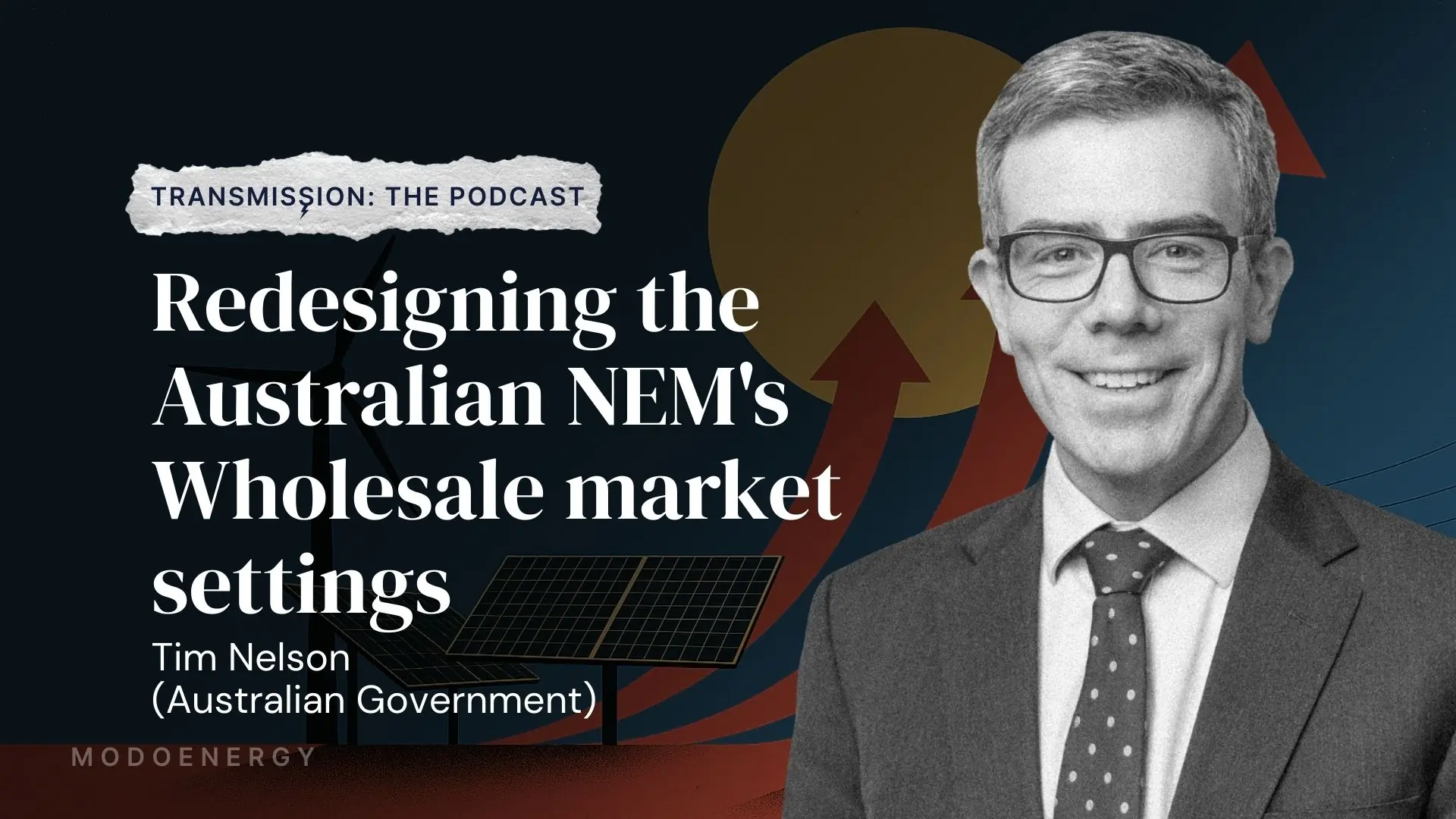Merchant revenues for battery energy storage systems settled at $2.54/kW-month in September 2025.
There was virtually no change in average battery revenues between August and September of this year. However, $2.54/kW-month represents a 45% decrease in revenues from September of 2024.
A steep decrease in arbitrage opportunities in the Integrated Forward Market - CAISO’s Day-Ahead Market - drove revenues down. The day-ahead 4-hour Top-Bottom (TB4) spread decreased 44% year-on-year. Historically, BESS merchant revenues in CAISO have been closely tied to the TB4 spread.
Executive Summary
- Merchant revenues declined 45% year-over-year to $2.54/kW-month, driven primarily by a 44% decrease in day-ahead arbitrage spreads, as lower peak demand YoY translated to lower peak prices.
- Despite favorable conditions for price volatility - including 72% higher gas prices and 11% more peak solar generation - September 2025 peak load fell 10.8% to 42.2 GW.
- BESS now discharge at over 8GW during evening peaks - 65% of the fleet’s capacity.
For any questions about CAISO research or benchmarking, reach out to logan@modoenergy.com.
Drivers of increased price spreads all pointed toward higher price spreads than September 2024. And yet CAISO’s DA TBs landed at just $114/MW last month; down from $203/MW a year prior.
Around-the-clock averages of load and net load were higher in September 2025, theoretically putting upward pressure on Energy prices.
The maximum solar output in a day increased by 11%, which exerts downward pressure on midday prices.
And natural gas costs as measured by CAISO’s fuel price index increased by $1.2/MMBtu, making gas peakers’ output more expensive.
But these are all averages. The highest load seen in CAISO across each month fell from 47.3 GW in Sep. 2024 to 42.2 GW in Sep. 2025 (-10.8%). With load never reaching more than 42.3 GW last month, there was never an opportunity for natural gas or batteries to set a high marginal price during the evening ramp.
Furthermore, these factors were also largely offset by the increased flexibility resulting from the increased presence of more battery energy storage capacity.
Battery energy storage systems regularly export more than 8GW in the evening
Although BESS were not able to leverage a scarcity event into higher revenues, they continue to reshape CAISO’s grid in major ways.
On a typical evening in CAISO, grid-scale batteries export more than 8GW of power at their peak. That’s 65% of the fleet’s total nameplate capacity, and 26% of net load at the same time of day.
BESS in California can maintain that level of output through the entire evening, as most batteries are four hours in duration. Together, batteries operating in CAISO typically export 33 GWh of Energy to the grid each evening.
Interestingly, BESS exports are not limited to the peak net load periods. For example, at some points between midnight and 1am, BESS discharge more than 1GW of power.
CAISO faces the nation’s steepest net load ramps, and batteries are central to managing them.
BESS are playing their part in stabilizing the grid. At midday, effective load (net load plus BESS charging) rose from 10GW to 11.5GW (+15%), while net load fell from 5.8GW to 5.2GW (-10%).
CAISO ME BESS Index | September 2025: $2.54/kW-month
August’s revenues from Ancillary Service provision and Energy arbitrage totaled just $2.54/kW-month. Without periods of increased Energy scarcity, revenue opportunities - and earned revenues - were very consistent day-to-day: daily revenues remained between $34/MW-day and $128/MW-day.
Revenues last year exhibited very different behavior. BESS earned $1,115/MW on September 5, 2024 — one quarter of that month’s total, and nearly one half of revenues earned in September 2025.
September 5, 2024’s exceptional revenues trace directly to the dynamics discussed earlier. Peak load that evening reached 47.3 GW, forcing CAISO to dispatch its most expensive generation resources. With demand pushing against modeled supply limits in the day-ahead market, batteries enjoyed scarcity prices close to $600/MWh.
This type of high-margin opportunity was entirely absent in September 2025, when peak load never exceeded 42.3 GW.
IFM revenues for battery energy storage fell YoY, but remain the primary merchant revenue stream
IFM - or the Day-Ahead Market - revenues continue to make up the bulk of the merchant revenue stack for battery energy storage in CAISO; 71% in September 2025. This is down from 81% a year ago. In revenue terms, the contribution of IFM arbitrage decreased by $1.93/kW-month.
The revenue from all four Ancillary Services decreased as well, for a total decrease of $0.41/kW-month. RTD Energy increases almost offset that change, increasing by $0.27/kW-month. This growth in RTD revenues is a recent trend in CAISO — possibly as a result of BESS “shading” their bids.
CAISO’s day-ahead Energy price never reached $100/MWh in September 2025
September 2025’s subdued price environment reflects a fundamental shift in CAISO’s supply-demand dynamics. The month’s peak day-ahead energy price consistently settled below $100/MWh - a stark contrast to September 2024, when prices spiked above $200/MWh for several hours during the Sept. 4-6 scarcity events.
The absence of price spikes in 2025 reflects the fundamentally different supply-demand conditions already discussed: without peak load exceeding 42.2 GW, expensive peaking natural gas units never needed to be dispatched, and the marginal price never climbed into scarcity territory.
Subscribers to Modo Energy’s CAISO Research can continue reading to learn about energy arbitrage opportunities for individual batteries and the latest in revenues from Resource Adequacy contracts.
Regional arbitrage opportunities for battery energy storage diverge significantly across California
California's central ZP26 zone continues to offer the most consistent arbitrage opportunity for battery operators, with median cumulative TB4 spreads of $5.7k/MW in September 2025 — nearly double that of NP15 and SP15.
This regional hierarchy reflects transmission constraints that create price separation between zones. ZP26's position in California's central valley puts it at the intersection of major transmission paths, where congestion during evening ramps creates localized scarcity that lifts prices above neighboring regions.







